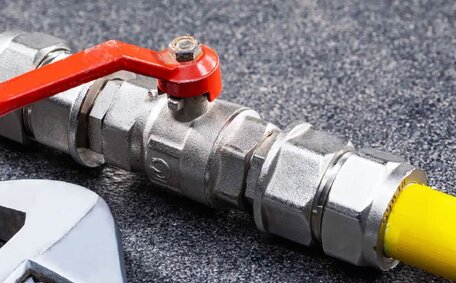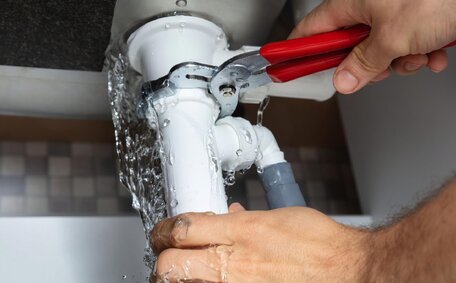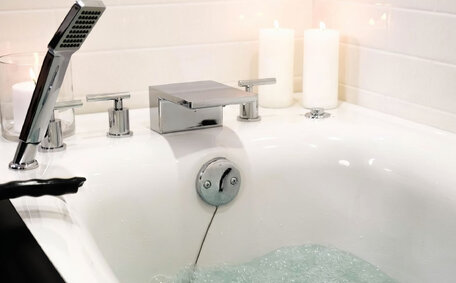Introduction to Blocked Drains in Industrial Settings
Blocked drains are a common issue in industrial settings like commercial kitchens, bathrooms and laundries. Food scraps, grease, hair and other debris can build up in drains and cause clogs. This leads to backed up sinks and toilets, foul odours and potential health hazards.
Preventing blocked drains in industrial facilities requires proper maintenance and waste disposal habits. Grease and oil should be collected and disposed of separately, not poured down sinks. And all drains should be cleaned regularly to keep flow running smoothly.
All food prep stations should have drain screens to catch solids. Hair traps can catch loose hair in bathroom drains.
If a clog does occur, boiling water, plungers or chemical drain cleaners may provide temporary relief. If a clog does occur, boiling water, plungers or chemical drain cleaners may provide temporary relief. Industrial sites may also need drain locating, pipe inspections and repairs to address damaged drains.
But severe blockages often require professional attention.
Stopping small clogs before they become major blockages is key. With vigilant maintenance and quick attention when problems arise, facilities can keep their drains clear and their operations flowing smoothly.
Common Causes of Blocked Drains in Commercial Kitchens and Bathrooms
Grease buildup is one of the most common reasons for clogged drains in commercial kitchens. Fats, oils and grease are poured down sinks on a regular basis during food prep and cleanup. Over time, these substances coat the insides of pipes and eventually congeal into blockages.
Food scraps are another major culprit. Pieces of food waste like egg shells, coffee grounds and vegetable peels often get washed down the drain. Without grinders to break them down, large food particles get lodged in pipes.
Hair is a key factor for bathroom drain clogs. Loose hairs shed during grooming accumulate in pipes. When combined with soap scum and other grime, hair tangles into dense clogs.
Paper products cause obstructions as well. Paper towels, feminine products and wipes do not dissolve like toilet paper. They snag on pipes and collect other debris.
All these clogs can lead to foul odours, backed up sinks and toilets, and even raw sewage overflows. Blocked drains pose serious health hazards and can force businesses to temporarily halt operations. That’s why proper maintenance and waste disposal habits are crucial in commercial settings.
Preventing Blocked Drains in Commercial Facilities
p>p>p>p>p>p>
Signs of a Blocked Drain in an Industrial Facility
Blocked drains in industrial facilities can severely disrupt operations and pose health risks if not addressed promptly. Here are some of the common signs of a clogged drain:
- Slow drainage from sinks, floor drains or other fixtures, with water taking longer than usual to go down
- Gurgling sounds coming from drains as water attempts to pass through a partial blockage
- Foul sewer odours wafting up from drain openings, especially during use
- Water pooling around drains or backing up and overflowing from fixtures
- Presence of grease, globs of food, hair and other debris around drains
- Multiple plumbing fixtures affected at once, such as all sinks or toilets unable to drain properly
- Decrease in water pressure throughout the facility’s plumbing system
- Bubbling overflows from toilets or floor drain grates
- Sewage leaking into the building from outside drains or manholes
Any of these signs indicate the need for immediate drain cleaning. Severe clogs may require professional drain snakes, hydro jetting or camera inspections to locate and clear the blockage.
Problems Caused by Blocked Drains in Industrial Settings
Blocked drains can wreak havoc in industrial facilities. Blocked drains can wreak havoc in industrial facilities.
Clogged sinks and floor drains create unpleasant odours that permeate work areas. Drainage issues also lead to pooling of dirty water, increasing slip and fall risks.
Standing water from blocked storm drains attracts pests like insects and rodents. It also poses contamination risks if fire sprinkler systems are affected. Lack of proper drainage can damage floors and foundations over time as well.
Perhaps most critically, clogged sewer lines can cause raw sewage to back up and overflow inside buildings. This creates severe health hazards and violates safety codes. Facilities may be forced to temporarily close down until problems are fixed.
Excess water from backed up drains can also damage equipment and inventory. Electronic systems and server rooms are especially vulnerable. The costs of replacing flooded appliances and electronics run high.
Blockages put added strain on plumbing systems too, leading to burst pipes, water leaks and high utility bills. Preventing clogs and promptly clearing any blockages are essential maintenance tasks for industrial sites.
Methods to Clear Blocked Drains
There are several methods that can be used to clear blocked drains in industrial facilities, depending on the severity of the clog.
Minor Clogs
For minor clogs caused by grease, hair and light debris, boiling water can help dissolve and dislodge the blockage. Use a kettle to pour boiling water directly into the affected drain. Repeat as needed until the drain is clear.
Baking soda and vinegar can also break up minor clogs when poured down drains. The chemical reaction generates fizzing and bubbles that can help disintegrate blockages.
A plunger creates suction to loosen clogs. Place the plunger firmly over the drain opening and plunge up and down rapidly to try and dislodge debris.
Moderate Clogs
Chemical drain cleaners containing lye or sulfuric acid help dissolve more stubborn clogs. Strictly follow product instructions, as these chemicals can be hazardous if used improperly.
Handheld drain augers or snakes can also be used to fish out and extract debris lodged deeper in pipes. Slowly turn the auger’s crank to feed the flexible cable down towards the clog.
Severe Clogs
High-pressure water jetting is an industrial-strength drain cleaning method for major blockages. It propels powerful jets of water through pipes to scour the interior and wash away accumulations.
In the most extreme cases where drains are completely blocked, a professional plumber may need to excavate and access pipes directly to mechanically cut out and clear blockages.
CCTV drain inspections can also locate damaged sections of pipe that may need repair or replacement to permanently solve drainage issues.
Regular maintenance is key to prevent minor clogs from developing into major blockages requiring intensive industrial drain cleaning methods.
When to Call a Professional Plumber for Blocked Drains
Attempting DIY drain clearing methods is fine for minor clogs. But there are certain circumstances when a professional plumber should be called right away for blocked drains:
- DIY methods like plungers, drain snakes and commercial cleaners have failed to open the blockage after several attempts.
- Multiple fixtures are affected, indicating a main sewer line clog.
- You suspect the drain may be blocked by a hard object like a toy, utensil or pipe fragment.
- Drain backups are frequent and chronic, pointing to an underlying problem.
- Sewage is overflowing from drains or toilets.
- Foul odours persist even after DIY drain cleaning.
- There are signs of water damage from drain backups.
- The clog may be in pipes under slabs or deep underground.
- There are gurgling sounds from shower and sink drains.
- You notice reduced water flow and pressure system-wide.
A professional plumber has the expertise and equipment to fully clear drain obstructions and inspect lines. They can determine if damaged pipes need repair or replacement. Calling at the first signs of a clog can prevent minor issues from becoming major blockages requiring extensive repairs down the road.
Regular Maintenance to Prevent Blocked Drains
Implementing a thorough maintenance routine is crucial for preventing blocked drains in industrial facilities. This includes both proactive measures to keep drains clear, as well as regular inspections to identify potential issues before they escalate.
Daily Maintenance
- Install drain screens over sinks and floor drains to catch food particles, grease and debris.
- Collect oil and grease in containers for proper disposal rather than pouring down drains.
- Remove all solids from liquid waste before disposal.
- Run plenty of hot water while washing dishes, equipment, floors etc. to help dissolve grease.
Weekly Maintenance
- Check and clean all drain screens and strainers.
- Flush drains weekly with hot water to keep pipes clear.
- Use enzyme drain cleaners or bacteria treatments to break down organics.
- Inspect and clean grease traps if present.
Monthly Maintenance
- Professionally clean all drains on a monthly basis.
- Monitor high use areas and keep records to identify problem drains.
- Conduct CCTV inspections of critical drain lines.
Following strict maintenance procedures keeps flow steady and prevents deposit buildup. Staff training is also key to ensure proper protocols are followed. An ounce of prevention avoids costly emergency drain cleanings down the road.
Inspection and Repair of Damaged Pipes Causing Blockages
p>Blocked drains are often caused by issues deeper underground in the pipe infrastructure, not just surface clogs. Completely clearing obstructions and preventing their recurrence requires identifying and fixing damaged drain lines.
Drain LocatingThe first step is to accurately locate the affected drains. A drain locate service uses specialised equipment to determine the exact position of underground pipes without needing to excavate. This prevents accidental damage to utilities during repairs.
CCTV Drain InspectionsA camera probe is fed down drains to visually inspect the interior condition. Any breaches, cracks, root intrusions, blockages and other faults are identified. This helps pinpoint damaged sections needing repair.
Pipe RepairsBased on inspection findings, specific pipe repairs and replacements are recommended. Typical solutions include:
- Patching cracks and holes
- Removing tree root infiltrations
- Replacing corroded or collapsed sections
- Upgrading undersized or poorly pitched pipes
Full repairs ensure drainage systems function as designed without leakages, blockages or failures.
Benefits of Drain Inspections and Repairsp>p>p>p>






